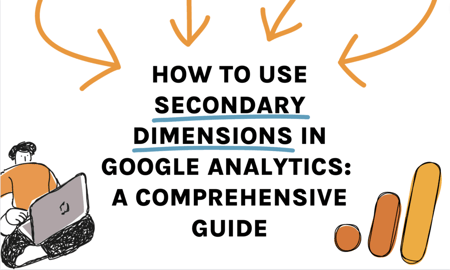Understanding Secondary Dimensions in Google Analytics: Meaning and Calculated Combination
Understanding Secondary Dimensions in Google Analytics: Meaning and Calculated Combination
Blog Article
Unveiling the Impact of Secondary Measurement in Google Analytics on Data Evaluation and Insights
In the world of data analytics, the utilization of additional dimensions within Google Analytics has actually emerged as a critical device for extracting deeper understandings and unraveling facility patterns that could or else remain obscured. By peeling off back the layers of primary data sets, secondary measurements use a nuanced perspective that enriches the understanding of individual actions, internet site performance, and the performance of marketing strategies.
Checking Out the Idea of Additional Dimensions
Second measurements in Google Analytics provide additional insights by allowing individuals to examine key information in combination with a second quality. By including second dimensions, customers can delve much deeper right into the data and reveal important connections that could otherwise go undetected - what is a secondary dimension in google analytics.
Comprehending the concept of second dimensions is critical for optimizing the potential of Google Analytics. It allows customers to segment information efficiently, recognize patterns, and make informed decisions based upon a more full image of their analytics information. By discovering the numerous secondary dimensions available in Google Analytics, users can unlock brand-new insights and enhance their digital marketing initiatives. Fundamentally, additional dimensions offer as a powerful device for boosting information analysis and driving actionable outcomes.
Enhancing Information Analysis With Additional Dimensions
Having actually developed the foundational understanding of additional dimensions in Google Analytics and their critical role in data analysis, the focus now shifts in the direction of leveraging these second credit to enhance the interpretation of analytics data (what is a secondary dimension in google analytics). By incorporating secondary measurements right into data analysis, experts can get deeper insights right into user behavior, internet site efficiency, and marketing performance

Moreover, secondary dimensions aid in contextualizing key information metrics by offering additional layers of details. This contextualization help in recognizing the 'why' behind the data fads, helping analysts make notified decisions and optimizations to enhance overall efficiency. Inevitably, integrating secondary measurements enhances the information interpretation procedure, leading to more meaningful understandings and calculated activities.
Discovering Hidden Insights Via Additional Measurements
Exploring the midsts of analytics information with additional dimensions discloses important understandings that would certainly otherwise remain covered. By incorporating second dimensions in Google Analytics, services can unearth surprise patterns, patterns, and connections that give an even more thorough understanding of individual behavior and web site efficiency. These added layers of information allow analysts to dig much deeper into the main measurements, such as traffic resources or touchdown web pages, and acquire an extra nuanced perspective on exactly how various variables communicate with each various other.
Through the usage of second measurements, experts can section and compare information throughout various dimensions, allowing them to recognize details variables that influence user involvement, conversion rates, and overall success metrics. By matching the main measurement of 'device classification' with the additional dimension of 'age group,' marketing experts can determine which age demographics like accessing the site via mobile tools versus desktops.
Leveraging Second Measurements for Actionable Analytics
Building upon the insights introduced with secondary dimensions in Google Analytics, businesses can currently harness this enriched information landscape to drive workable analytics and strategic decision-making. By leveraging secondary dimensions, companies can delve much deeper into their data to draw out useful patterns, patterns, you can try here and connections that may have previously gone unnoticed. This deeper level of evaluation makes it possible for organizations to get a much more extensive understanding of individual actions, campaign performance, and total website performance.
One key benefit of utilizing additional measurements for actionable analytics is the ability to section information based on particular standards. This division permits companies to tailor their strategies and campaigns to different target market groups, causing more targeted and efficient marketing initiatives - what is a secondary dimension in google analytics. Furthermore, second dimensions give an even more holistic view of individual interactions, enabling services to optimize their internet site web content, design, and general customer experience
Optimizing Decision-Making With Secondary Dimensions
To improve critical decision-making in analytics, leveraging secondary measurements in Google Analytics can give a much more nuanced viewpoint on user habits and project efficiency. By next integrating second dimensions into information analysis, companies can dive deeper right into the specifics of their web site visitors' communications and involvement patterns. This extra layer of information enables for a much more extensive understanding of exactly how various variables, such as demographics, devices, or website traffic resources, impact crucial efficiency indicators.

Verdict
Finally, using additional dimensions in Google Analytics plays an important role in improving information analysis and revealing covert understandings. By exploring this concept, one can obtain a deeper understanding of customer actions and make notified choices based upon workable analytics. Leveraging additional measurements allows for a much more extensive analysis of check these guys out data and makes best use of the performance of decision-making procedures.

Report this page